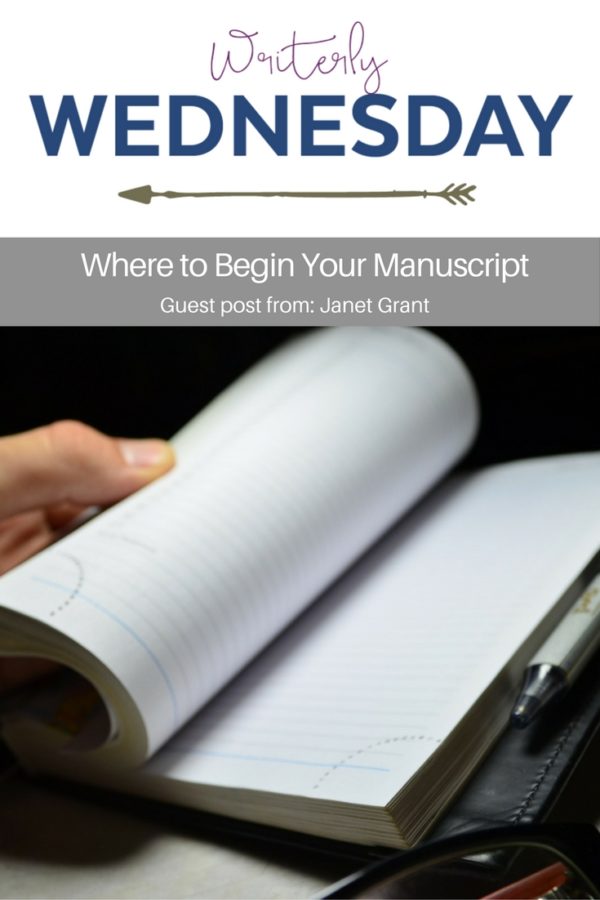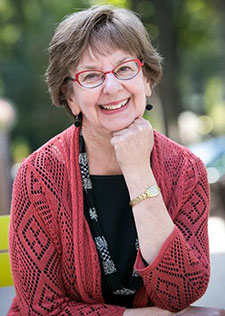Where to Begin Your Manuscript
 I love that the Bible begins in just the right spot: “In the beginning God created.” Chaos succumbs to order. It’s the ultimate conflict! Genesis’s beginning makes so much sense to us; I can’t imagine a better opening.
I love that the Bible begins in just the right spot: “In the beginning God created.” Chaos succumbs to order. It’s the ultimate conflict! Genesis’s beginning makes so much sense to us; I can’t imagine a better opening.
Unfortunately, the choices aren’t so obvious when it comes to our own writing. I remember hosting a dinner table at a writers conference a couple of years ago and asking each person what he or she was working on.
One woman recounted her novel’s storyline and then asked me if I thought she should cut the first couple of pages, which some of her critique partners had suggested. She was having trouble murdering those darling paragraphs that she had labored over for months.
I do believe a hush fell over the table as I said, “I think you should start the story in the middle of the manuscript. Everything before that point is backstory.”
Everyone at the table, including me, wondered how the writer would respond to such a radical concept. She chewed on the idea, and as she did, her expression lightened, and she exclaimed, “That’s perfect! Why didn’t I see it before?” Then she rattled off how that would open up new vistas in the novel.
Now, I wish I could proclaim myself some sort of genius for having made the suggestion, but the truth of the matter is that I’ve read enough manuscripts to know that starting in the wrong place is a common malady.
Author Brain Dump
Often the writer is so immersed in the story, has done so much research, and knows the characters so well, that she is tempted to do a brain dump in the book’s opening. So much detail is clogging the writer’s mind that she wants to bring the reader up to speed right off.
What the novelist forgets is that the reader isn’t ready to discover the complex underlying motivations for the protagonist’s first actions. Rather than introducing the character to us, the author in essence pulls out the character’s entire psychological profile. I’m so not ready for that! Why, I’m not even on a first-name basis with the character yet. Ease me into the relationship with a gentle introduction.
I also don’t need the complete physical description. Don’t provide me with any until it naturally fits in the story.
Backstory Overload
In addition to wanting to provide too many details about the character (or characters), writers are tempted to start with the backstory. I just finished reading a manuscript in which the story began with a woman calling a restaurant to make a reservation. The next thing I knew, I was being told the restaurant owner’s life history. Totally backstory stuff. I didn’t care yet. I hadn’t even met that character; I’d only been introduced to the woman phoning the restaurant, which made the backstory material all the more confusing for me. I wasn’t sure who the novel’s key character was.
The more complex the story, the more tempting to provide too much information too soon. The conflict, the setting, and the main characters all demand to be front and center on the first pages, which quickly turns into a traffic jam, with the poor reader overwhelmed by all the detail.
Anchor Your Beginning
As a reader, what I look for are “anchors” that settle me into the story and keep me from being carried off by strong winds. Here’s what I want
- To care about the protagonist; give me reason to do so.
- The elemental details about the story’s setting.
- What conflict the character is facing right now.
Drop the anchors in the middle of a pensive moment. Fill in details later.
How do you know where to start your novel? Often it’s in the middle of the story as you’ve outlined it. Go ahead, be daring, give it a try.
 Janet Kobobel Grant had two goals as a grade-schooler: to read all the books in the library and to write a novel each summer. Her dream was to win the Pulitzer Prize. Well, she never did get all those books read, she seldom completed her summer writing project, and she certainly never won a Pulitzer Prize. But those unusual aspirations were indicative of her love of books.
Janet Kobobel Grant had two goals as a grade-schooler: to read all the books in the library and to write a novel each summer. Her dream was to win the Pulitzer Prize. Well, she never did get all those books read, she seldom completed her summer writing project, and she certainly never won a Pulitzer Prize. But those unusual aspirations were indicative of her love of books.
She’s written the following books: But Can She Type? with InterVarsity; Where Is God When I Need Him Most? with NavPress; Growing in Prayer; Experiencing God’s Presence; Every Child Needs a Praying Mom (with Fern Nichols and a Silver Medallion winner);The Breast Cancer Care Book (with Sally M. Knox, M.D. and a Retailers Choice finalist); and collaborated on several Women of Faith books (all with Zondervan).
She understands the inside scoop on publishing as well, having worked with Zondervan and Focus on the Family. She has a strong publishing network, experience in negotiating contracts, and comprehension of each production stage a book must move through, from acquisition to printed matter. Her desire to help authors create the most marketable, carefully crafted manuscripts and to see those authors succeed in their careers was probably born in the library she frequented as a child.
Janet is a member of the Association of Author Representatives (AAR). She acquires Adult Fiction & Nonfiction books.
